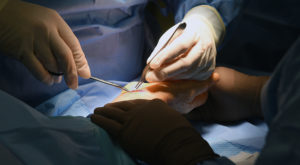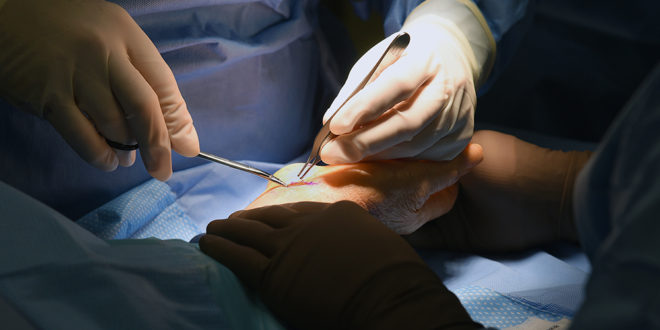 The hand is the cutting edge of the mind – Jacob Bronowski
The hand is the cutting edge of the mind – Jacob Bronowski
From mind to hand and seamlessly to our fingers, we can execute an array of complex tasks without even thinking about them. Even now, as you read this article, complicated hand movements were executed to be able to get the information from my typing on my keyboard to you flipping through the pages of Medicos Next’s magazine to read this article.
Since we use our hands so frequently and regularly, why are we often so naive about their functionality and how easy they make our lives? This is most likely due to you not having any complications or any mobility or functionality issues with them. But, what about people who have experienced a significant injury that greatly reduces the usage of their hands, or worse, have had a finger or part of their hand amputated?
Reconstructive microsurgery looks to ease any pathology that can be caused by trauma, degeneration, neuromuscular or congenital issues, or tumor. Furthermore, it can be utilized in various situations, such as amputation of the hand or a body part, brachial plexus injury, peripheral nerve injury, or free tissue transfer. More precisely, with focus on the hand, reconstructive microsurgery surgeries can be conducted that can restore the form and function of the upper extremity of the hand and arm that has been severed, including finger, hand, wrist, forearm, elbow, and shoulder.
Ensuring magnification to increase the visual horizon of the surgeon, so that surgery can be performed on intricate tissue, requires the use of high magnification (8-40x) microscopes. By using magnification, surgeons utilize fine sutures and micro needles alongside other fine micro-instruments to repair and sew together damaged and amputated arteries and veins to reestablish blood flow to the severed area, as well as to reconnect nerves.
There have been significant developments in microsurgery since the first successful replantation of two human upper extremities by microvascular means was done in 1964. While the first successes were defined by the survival rate of the amputated part alone, developments in the practice now allow for success to be defined by the functional demands and capabilities of the amputated part.
Although, at first, such procedures consisted mainly of fingers and thumbs being reattached through microsurgery, the practice now extends to ears, scalp, nose, face, arm, and penis. This capability of reattaching other body parts through microsurgery has been bolstered by the advancements of tools that allow for anastomosis of small microscopic blood vessels and nerves (typically one millimeter in diameter). Simultaneously, coupled with advancement in various tools used for reconstructive microsurgery, advancements in computing and robotics have allowed for less invasive surgeries that result in more precise techniques. Additionally, the possibility of biologically engineering missing tissues and structures has opened up an avenue to the future that can allow surgeons to use tissue engineering instead of tissues from other parts of the body to repair and replace damaged tissue.
The capability of surgeons to complete a variety of reconstructive microsurgeries is growing; however, the number of skilled surgeons in Nepal is still limited. Currently, Nepal has only a handful of doctors conducting reconstructive microsurgery, with only one specialist focusing on hand reconstructive microsurgery. Dr. Shilu Shrestha of Blue Cross Hospital,,Tripureshwor, who has mastered the art of microsurgery through countless hours of practical training and conducted over 5,000 different surgeries, disclosed, “This specialty needs additional training after becoming an orthopedic or plastic surgeon. The skill has a steep learning curve and needs a few years to master.”
She described the process of microsurgery and rehabilitation, as well as some of the difficulties that are faced in Nepal while conducting reconstructive microsurgeries on hands. She started by saying, “Depending on the severity of the hand injury, they can be repaired in a single surgery, however, some injuries will require a staged approach, with multiple surgeries. Often, multiple parts of the hand need to be repaired, requiring individualized care both during and after surgery. Such cases can include hand injuries that damage the small blood vessels or nerves. She followed this up by talking about a recent study that her colleagues and herself completed in 2019, “Outline of Hand and Wrist Injuries Presenting to an Emergency of a Tertiary Care Center in Nepal”, where they found that one quarter of hand injuries presented to the emergency of a trauma center were injuries that needed exploration of important structures like blood vessels and nerves, which may require microsurgery. Although it was shown that one quarter needed further investigation to determine if they needed microsurgery, the vast majority did not receive surgery. This may be due to the complexity of the surgery and the lack of skilled surgeons in Nepal to conduct this procedure, or the lack of awareness that the procedure may be an option. Another impediment to accessing this surgery is the cost, as many Nepalis cannot afford this option.
Elaborating further, Dr. Shilu said, “Reconstructive microsurgery is accessible in Nepal, but awareness of it is lacking amongst doctors and patients.” She went on to express the need to increase access to people in need, especially as Nepal is a labor-intensive country where many people use their hands for income generating purposes. Although the treatment requires an initial large sum of money, when comparing it to the amount of money that may be lost due to other failed treatments and hospital visits, or the amount that will be lost when individuals are unable to make a living otherwise, the cost is minuscule and highly recommended.
With her focus being on reconstructive hand surgery, she touched upon the recovery process and the possibility of failure, “The most common reasons being: type of pathology, overall health status and associated health problems of the patient, and surgical expertise and experience of the surgeon,” Building on this, she mentions the difficulties of post-operative rehabilitation in Nepal for patients who have undergone the surgery. Due to the majority of individuals needing this surgery coming from outside the Kathmandu valley, as well as most being subsistent farmers and thus needing their hands for work, people do not come for follow-ups to check the progress. Also, while they should be resting and rehabilitating, they begin their normal work schedule again, which can further damage the hand on which surgery has just taken place. With failed surgery, or improper rehabilitation after surgery, individuals can experience an array of difficulties that affect their hand. This can include prolonged pain, stiffness, tingling, and numbness, or more severely, loss of mobility and function that restricts the use of their hands.
Hands are the cutting edge of the mind, which make our thoughts become reality in different mediums, and with work continuously being conducted through our hands, it is crucial to maintain their functionality. With the advancements being made in reconstructive microsurgery, people have been given the opportunity to extend the ability to complete tasks with precision. However, Nepal is a developing country that has a long way to go before these advancements reduce the cost to make it more accessible to the people who most need it. Nevertheless, with people like Dr. Shilu championing the need for reconstructive microsurgery for everyone, one can rest assured that the farmers, who use their hands to produce the food that you will be eating, will continue to do so.
 Medicosnext
Medicosnext




